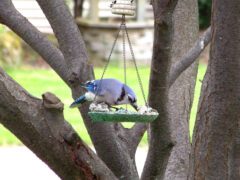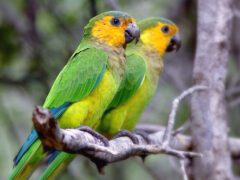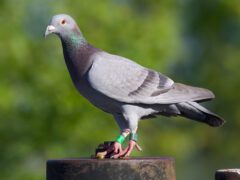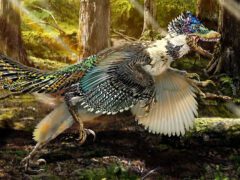Ornithologists recognize three Long-tailed Tit subspecies groups: caudatus, europaeus, and alpinus. The caudatus group typically occurs from Scandinavia to eastern Russia and northern Japan, but some populations occasionally irrupt southward. The europaeus group is found across much of Europe (from Ireland to western Turkey) and also in parts of Korea and Japan. The alpinus group occurs from southern Portugal to Turkey and eastward into the Caucasus, Iran, and Turkmenistan. Adults in the caudatus group are unique in having all-white heads, whereas adults in the europaeus and alpinus groups have a broad black “eyebrow” that extends over the eye to the nape. Back color is helpful in differentiating between adults in these latter two groups—birds in the europaeus group have a black mantle bordered by pink and birds in the alpinus group have a gray mantle with little or no pink. Birds in the alpinus group have a shorter tail than the other two groups and often have a small black throat patch.
Identification
Powered by Merlin
Adorable, active little bird with a minute stubby bill. Distinctive: tiny and fluffy with attractive pinkish, black, and white plumage and very long tail. Some plumage variation across range; adults in northern parts of range have white head without broad black eyebrows and whiter underparts, while those further south are darker. Juveniles (seen in summer–early autumn) have brown head sides; become like adult by winter. Often travels in groups, at times joining with flocks of other tits and small woodland birds. High-pitched, fussy calls add to restless demeanor. Inhabits wooded and forested habitats, parks, gardens, and hedges in farmland; sometimes visits bird feeders.
Relative Size
One of Europe’s smallest birds by weight. Larger than a Goldcrest and smaller than a Great Tit.

 sparrow-sized or smaller
sparrow-sized or smallerMeasurements
- Both Sexes
- Length: 5.1-6.3 in (13-16 cm)
- Weight: 0.2-0.3 oz (6.2-10 g)









